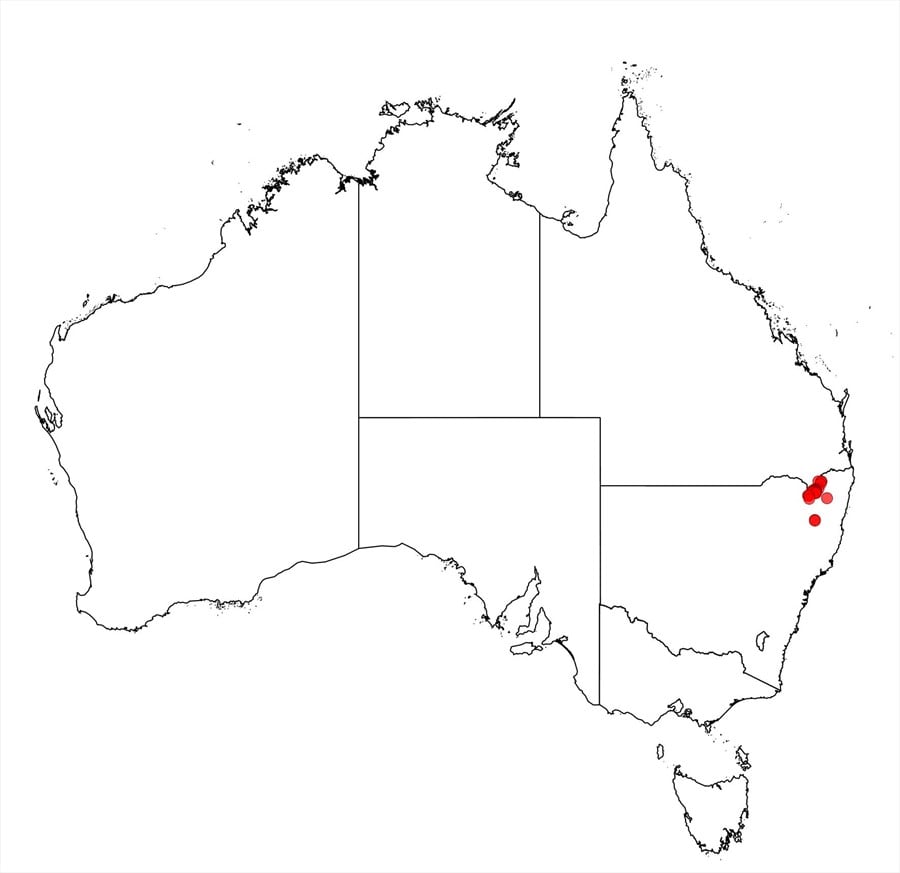Acacia torringtonensis Tindale
WATTLE
Acacias of Australia
Family
Fabaceae
Distribution
South-eastern Qld in the Wyberba–Wallangarra region S to the Torrington district in Northern N.S.W.
Description
Multistemmed shrub 0.6–2 m high, bipinnate foliage sometimes persistent. Branchlets shortly ±villous. Phyllodes crowded, some irregularly verticillate or clustered, on short stem-projections, ascending to erect, linear to very narrowly elliptic or linear-oblanceolate, straight to shallowly incurved, flat, 10–25 mm long, 1–2 mm wide, acute and obliquely mucronate, subglabrous or with sparse, spreading hairs, finely rugulose when dry; obscurely 1-nerved, midrib central or excentric; gland inconspicuous, 3–8 mm above pulvinus, sometimes absent. Inflorescences normally 1–3-headed racemes 3–15 mm long, interspersed with some simple ones; peduncles 3–11 mm long, stout, shortly ±villous; heads globular, 30–40-flowered, yellow to bright yellow. Flowers 5-merous; sepals 2/3–5/6-united; petals ciliolate towards apices. Pods narrowly oblong, irregularly curved or twisted, 3–9 cm long, 4–6 mm wide, thinly coriaceous, dark brown to blackish, shortly ±villous but indumentum sometimes sparse. Seeds longitudinal, oblong-elliptic, 4–5 mm long, shiny, black; aril clavate.
Phenology
Flowers Aug.–Oct.
Habitat
Grows on elevated tablelands (900–1200 m) in acidic soils derived from granite, in dry sclerophyll forest.
Specimens
Qld: 8 miles [12.9 km] E of Wyberba, L.Pedley 307 (BRI). N.S.W.: 19 km S of Silent Grove towards Torrington, R.Coveny 2270 (BRI, NSW, PERTH); 6.5 miles [10.5 km] N of Torrington on the Silent Grove rd, R.Coveny 3910 & K.Thurtell (A n.v., AD, BRI, K n.v., NSW, PERTH, U n.v., UC n.v., US n.v.).
Notes
B.R.Maslin, Fl. Australia 11A: 344 (2001), treated this name as synonymous with A. ruppii, however the entity is now considered best regarded as a distinct species. Although A. torringtonensis is closely related to the geographically restricted N.S.W. endemic A. ruppii the latter is normally distinguished by its longer, 4–8-headed racemes and because it grows at lower elevations on soils derived from sandstone.
FOA Reference
Flora of Australia Project
Author
B.R.Maslin
This identification key and fact sheets are available as a mobile application:
URL: https://apps.lucidcentral.org/wattle/
© Copyright 2018. All rights reserved.






